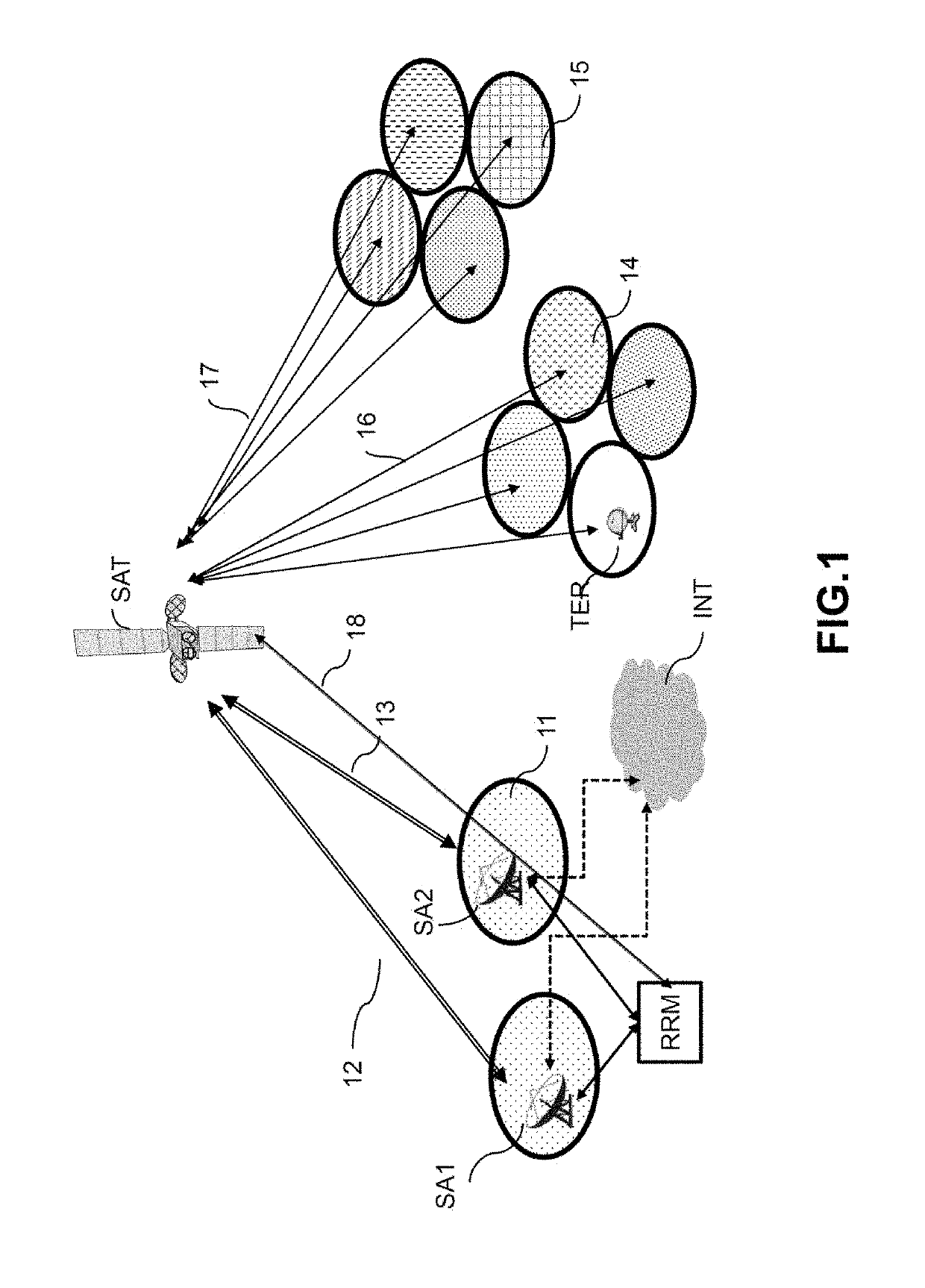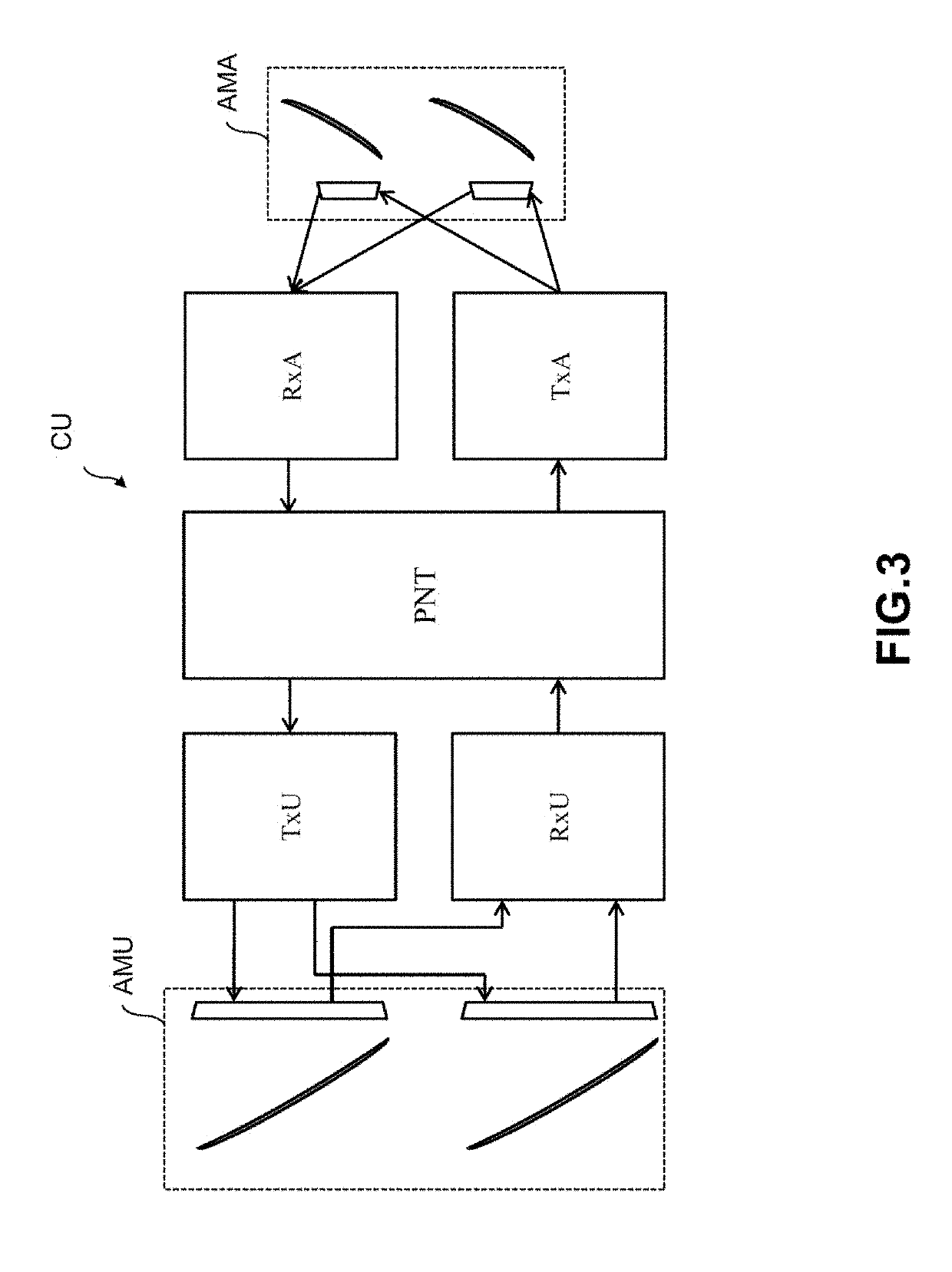Method of allocating frequency resources for a satellite telecommunication system
a satellite telecommunication system and frequency resource technology, applied in the field of satellite communication systems or satellite systems with very high throughput, can solve the problems of insufficient frequency and power resources allocated to these spots, waste of resources, and insufficient data traffi
- Summary
- Abstract
- Description
- Claims
- Application Information
AI Technical Summary
Benefits of technology
Problems solved by technology
Method used
Image
Examples
Embodiment Construction
[0057]FIG. 1 represents a multibeam satellite broadband telecommunications system for access to the Internet network INT. Such a system comprises a satellite SAT, at least one feeder station SA1,SA2 also called a “gateway” and several user terminals TER situated in various cells or spots 14,15. The system furthermore comprises a radio resources manager RRM able to communicate on the one hand with the feeder stations SA1,SA2 and on the other hand with the satellite SAT, via for example a remote control link 18.
[0058]A feeder station SA1,SA2 comprises a radiofrequency emission and reception device to communicate with the user terminals TER via the satellite SAT through the bidirectional links 12,13,16,17. A link from a feeder station SA1 to the user terminals TER via the satellite SAT is called a forward link. A link from a user terminal TER to the feeder stations SA1,SA2 via the satellite SAT is called a return link. The links 12,13 between a feeder station SA1,SA2 and the satellite ...
PUM
 Login to View More
Login to View More Abstract
Description
Claims
Application Information
 Login to View More
Login to View More - R&D
- Intellectual Property
- Life Sciences
- Materials
- Tech Scout
- Unparalleled Data Quality
- Higher Quality Content
- 60% Fewer Hallucinations
Browse by: Latest US Patents, China's latest patents, Technical Efficacy Thesaurus, Application Domain, Technology Topic, Popular Technical Reports.
© 2025 PatSnap. All rights reserved.Legal|Privacy policy|Modern Slavery Act Transparency Statement|Sitemap|About US| Contact US: help@patsnap.com



